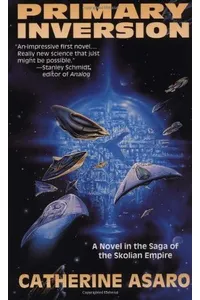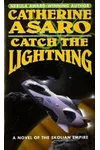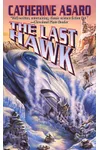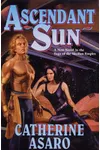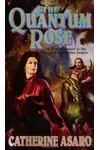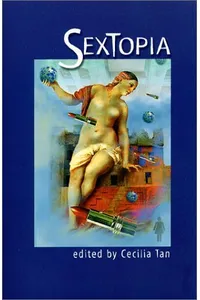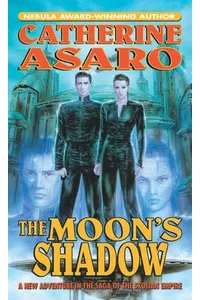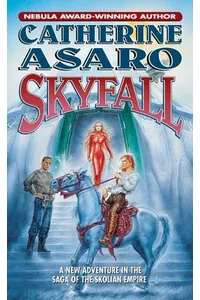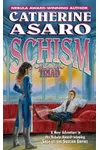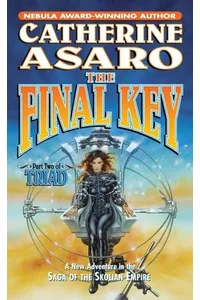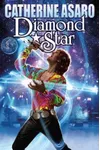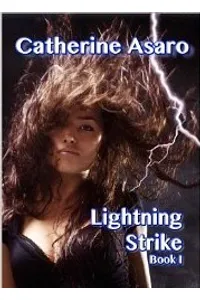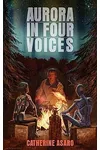Step into the dazzling universe of the Saga of the Skolian Empire, where telepathic dynasties clash, faster-than-light tech reshapes reality, and romance intertwines with interstellar intrigue! Crafted by Catherine Asaro, this science fiction epic blends hard science, space opera, and heartfelt drama, inviting readers to explore a galaxy teeming with power struggles and profound human connections.
Unlike typical sci-fi, the Saga of the Skolian Empire stands out for its fusion of rigorous physics and emotional depth, following the Ruby Dynasty as they navigate love, war, and telepathic bonds. Ready to dive into a series that’s as brainy as it is thrilling? Let’s explore its origins, stories, and lasting allure.
How the Saga of the Skolian Empire Began
Catherine Asaro, a physicist with a Ph.D. from Harvard, launched the Saga of the Skolian Empire in 1995 with Primary Inversion. Her scientific expertise and passion for storytelling birthed a universe where complex mathematics—like quantum mechanics and special relativity—underpin a gripping narrative. Inspired by her academic work, Asaro wove equations and diagrams into her prose, creating a hard sci-fi saga that feels both futuristic and plausible.
Asaro’s background as a ballet dancer and musician also shaped the series’ lyrical style and emotional resonance. Her vision? A space opera that balances cerebral concepts with the heart-pounding drama of interstellar empires, earning her a devoted fanbase and critical acclaim.
The Heart of the Saga of the Skolian Empire
The series spans 18 novels and numerous short stories, chronicling the Skolian Empire’s battle against the cruel Eubian Concord. Key books include Primary Inversion, where telepathic Jagernaut Sauscony Valdoria grapples with love and war; The Radiant Seas, a romantic epic of Sauscony’s secret marriage to an enemy heir; The Quantum Rose, a Nebula Award-winning allegory of quantum scattering; and Carnelians, a tale of fragile peace talks amid cultural divides.
Themes of power, identity, and technology permeate the saga. Telepathy, enabled by the Skolians’ faster-than-light communication, drives political intrigue and personal bonds, while the Eubians’ sadistic culture highlights ethical dilemmas. Asaro’s blend of hard science—think Klein bottles and Fourier transforms—with space opera flair creates a universe that’s both intellectually stimulating and emotionally gripping. The non-chronological storytelling, spanning generations, adds depth, inviting readers to piece together the Ruby Dynasty’s legacy.
The setting, a galaxy of thousands of planets, pulses with vivid cultures, from the Skolians’ democratic ideals to the Eubians’ slave-driven empire. Asaro’s prose, often laced with romance, makes the series accessible to sci-fi newcomers while satisfying genre veterans with its scientific rigor.
Why the Saga of the Skolian Empire Resonates
The Saga of the Skolian Empire has left a mark on sci-fi for its bold fusion of genres. Its Nebula Award for The Quantum Rose and multiple Romantic Times Awards for Best SF Novel underscore its critical success. Fans praise Asaro’s ability to craft relatable characters—like the fierce yet vulnerable Sauscony—amid complex worldbuilding, making the series a cult favorite among space opera enthusiasts.
Its exploration of diversity, gender roles, and STEM themes, paired with Asaro’s advocacy for women in science, resonates with modern readers. By challenging sci-fi norms with romance and emotional depth, the saga remains a trailblazer, inspiring writers to blend heart and intellect in speculative fiction.
- First Book Published: Primary Inversion (1995)
- Total Books: 18 novels, plus novellas and short stories
- Notable Awards: Nebula Award for The Quantum Rose (2001), Romantic Times Awards for Best SF Novel
- Author’s Background: Ph.D. in chemical physics, former ballet dancer
Grab Primary Inversion and blast off into the Saga of the Skolian Empire’s thrilling galaxy, where science, romance, and adventure collide!
